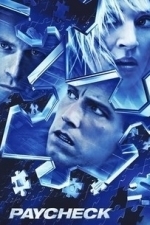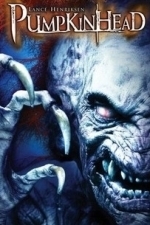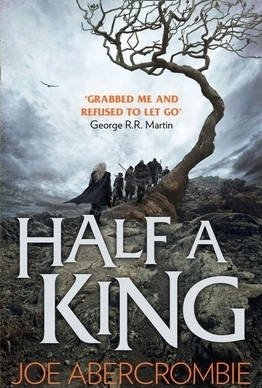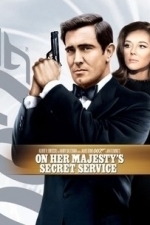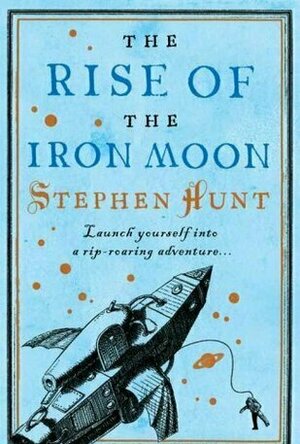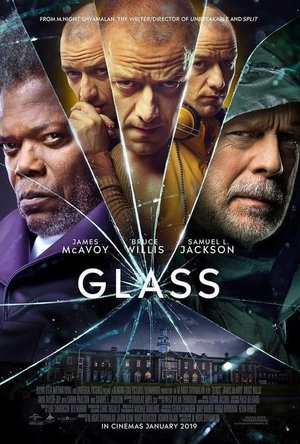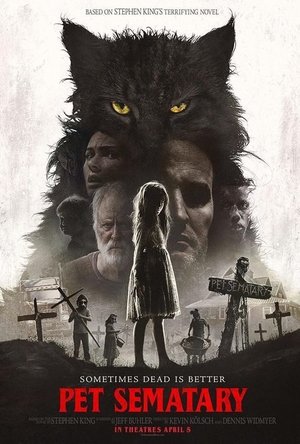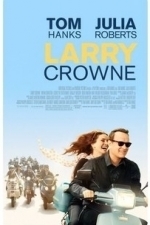Search
Search results
Gareth von Kallenbach (980 KP) rated Paycheck (2003) in Movies
Aug 14, 2019
In the year 2007, memories can be erased almost as easily as they can be created. With corporate security being of top concern, this technology is in high demand for corporations who hire people to work on sensitive projects.
Michael Jennings (Ben Affleck), is a master of technology, and as such, is in high demand for his ability to reverse engineer technology. Companies hire him to work in private to unlock technological secrets of their competition and upon completion of his work; Jennings has his memories of his work and time at the company removed. This arrangement protects the companies, as they do not have to disclose how they came about the new technologies and the only person who can attest to the source of the work has no memory of it making the claim valid, and keeping him from being able to recoup long-term profits from the company.
Jennings is well paid for his work, and has recently completed a two-month job when his friend Rethrick (Aaron Eckhart), asks Michael to come work on a secret thee-year project for his company. Michael is told only that it deals with optics and that he will be paid with stock options worth hundreds of millions of dollars.
After thinking about the deal, Michael agrees to the job and sets out to complete the task ahead of him.
In what seems like a few minutes to him, Michael comes to in the office of Rethrick and is stunned to learn that he has completed his work and that it was a huge success.
Pleased, Michael sets out to collect his payment but is surprised to learn that he forfeited his stocks four days earlier and sent himself an envelope containing various mundane items such as paperclips, ball bearings, matches, and keys.
Before long, Michael is running for his life and attempting to unravel the mystery of the missing three years in his memory.
Based on the short story by renowned Sci-Fi author Phillip K. Dick, and directed by famed action helmer John Woo, “Paycheck” is a pleasant and entertaining surprise. The previews do not do this film justice, as it is an entertaining and engrossing film with good supporting work by Uma Thurman and Paul Giamatti.
There are a number of twists and turns to the story and some good action and humor along the way. Affleck does solid work as a man desperate to solve the mystery and struggling to cope with his life spun out of control.
While the ending was a bit to Hollywood for me, “Paycheck” is a solid and entertaining film and worth seeing.
Michael Jennings (Ben Affleck), is a master of technology, and as such, is in high demand for his ability to reverse engineer technology. Companies hire him to work in private to unlock technological secrets of their competition and upon completion of his work; Jennings has his memories of his work and time at the company removed. This arrangement protects the companies, as they do not have to disclose how they came about the new technologies and the only person who can attest to the source of the work has no memory of it making the claim valid, and keeping him from being able to recoup long-term profits from the company.
Jennings is well paid for his work, and has recently completed a two-month job when his friend Rethrick (Aaron Eckhart), asks Michael to come work on a secret thee-year project for his company. Michael is told only that it deals with optics and that he will be paid with stock options worth hundreds of millions of dollars.
After thinking about the deal, Michael agrees to the job and sets out to complete the task ahead of him.
In what seems like a few minutes to him, Michael comes to in the office of Rethrick and is stunned to learn that he has completed his work and that it was a huge success.
Pleased, Michael sets out to collect his payment but is surprised to learn that he forfeited his stocks four days earlier and sent himself an envelope containing various mundane items such as paperclips, ball bearings, matches, and keys.
Before long, Michael is running for his life and attempting to unravel the mystery of the missing three years in his memory.
Based on the short story by renowned Sci-Fi author Phillip K. Dick, and directed by famed action helmer John Woo, “Paycheck” is a pleasant and entertaining surprise. The previews do not do this film justice, as it is an entertaining and engrossing film with good supporting work by Uma Thurman and Paul Giamatti.
There are a number of twists and turns to the story and some good action and humor along the way. Affleck does solid work as a man desperate to solve the mystery and struggling to cope with his life spun out of control.
While the ending was a bit to Hollywood for me, “Paycheck” is a solid and entertaining film and worth seeing.
Darren (1599 KP) rated Pumpkinhead (1988) in Movies
Oct 24, 2019
Characters – Ed Harley is a hardworking shop keeper and single father, he gets on well with the community and enjoys the quiet life. His life is turned upside down when his son is killed in an accident, which pushes him to turn to the dark arts to avenge his son’s death, only he didn’t plan for what would be expected from him. Chris is one of the teenagers that wants to do the right thing after the accident, much like the rest of the teenagers they all blend into one, except for the one that caused the accident, who only wants to look after himself.
Performances – Lance Henriksen is the star of the film, he is easily the best performer as his character goes through the biggest trauma and shows the desperation for revenge and regret for his decision. When it comes to the rest of the cast, they are performed to the level most slasher films reached.
Story – The story here follows a man that will do anything to get vengeance for his son’s death, which sees him summon the evil Pumpkinhead to kill the people that took his son, he soon learns the errors of his choice and must figure out how to stop the killing machine. For a monster creature feature slasher this is a simple story, we don’t get twists, we don’t need much character development as we are more interested in seeing the effects being used. It is nice have a story that remains simple in the horror genre at times too.
Fantasy/Horror – The fantasy elements of this film comes from the figure of Pumpkinhead that gets summoned to do revenge for people that believe they have been wronged, which plays hand in hand with the horror side of the film which is slasher elements which show just how deadly this figure will be.
Settings – The film is set in a small town where we don’t have many people with the ones living their knowing each other and anyone coming from the outside being frowned upon.
Special Effects – The effects are the highlight of the film, Stan Winston was known for his ability to create some of the most memorable creatures in film history and with him directing he brings us another terrifying creation.
Scene of the Movie – The first imagine of Pumpkinhead.
That Moment That Annoyed Me – The teenagers are stupid for how they acted for the accident to happen in the first place.
Final Thoughts – This is a slasher that can be enjoyed by the horror community, it offers everything needed to just let us enjoy ourselves without challenging us like other horrors.
Overall: Simple, effective and fun horror.
Performances – Lance Henriksen is the star of the film, he is easily the best performer as his character goes through the biggest trauma and shows the desperation for revenge and regret for his decision. When it comes to the rest of the cast, they are performed to the level most slasher films reached.
Story – The story here follows a man that will do anything to get vengeance for his son’s death, which sees him summon the evil Pumpkinhead to kill the people that took his son, he soon learns the errors of his choice and must figure out how to stop the killing machine. For a monster creature feature slasher this is a simple story, we don’t get twists, we don’t need much character development as we are more interested in seeing the effects being used. It is nice have a story that remains simple in the horror genre at times too.
Fantasy/Horror – The fantasy elements of this film comes from the figure of Pumpkinhead that gets summoned to do revenge for people that believe they have been wronged, which plays hand in hand with the horror side of the film which is slasher elements which show just how deadly this figure will be.
Settings – The film is set in a small town where we don’t have many people with the ones living their knowing each other and anyone coming from the outside being frowned upon.
Special Effects – The effects are the highlight of the film, Stan Winston was known for his ability to create some of the most memorable creatures in film history and with him directing he brings us another terrifying creation.
Scene of the Movie – The first imagine of Pumpkinhead.
That Moment That Annoyed Me – The teenagers are stupid for how they acted for the accident to happen in the first place.
Final Thoughts – This is a slasher that can be enjoyed by the horror community, it offers everything needed to just let us enjoy ourselves without challenging us like other horrors.
Overall: Simple, effective and fun horror.
Natacha (374 KP) rated Half a King (Shattered Sea #1) in Books
Oct 26, 2019
Contains spoilers, click to show
Original review : https://wp.me/pbesru-7z
Another book that I picked because of booktuber Holly Hearts Books and once again a book that I really enjoyed.
At its base, the main story is a very basic and simple one: a young prince betrayed by his own family and now sicks revenge. We've seen that many times, by what makes it different is the execution.
Things I liked:
- The characters. We have a group of six characters all very interesting, intriguing, well rounded, they all have their own voice and their own motivations. I love watching them bound and go from hating each other to be willing to die for each other.
- Yarvi's growth. Yarvi gowns a lot throughout the story. He goes from peaceful minister to-be, to an insecure king, to hopeless slave and much more. And with every step, we can see the changes to his personality, from a sweet little boy to a man that walks the line of becoming something he hates and much more.
- Nothing. And when a say Nothing I mean the character Nothing. That's right there is a character call like this. And he was one very mysterious and twisted character.
- But most off all what really makes this book amazing for me was the ending. There were a couple of passages where I could easily predict what was going to happen, but boy I didn't see the two plot twist at the end! And especially the first one was so good!!!
-<spoiler> You don't get the ending that you would expect. When you have a revenge story you usually expect at the end the main character to get what he wanted. But not here. It came close but it didn't quite end up like someone would assume.</spoiler>
Things I didn't like:
There wasn't much I didn't like so I'll have to be picky for the section
- There were mentions of old magic and elves in the past and I would have like to see a little more about that.
- I was told that Joe Abercrombie is a go-to for grimdark fantasy so I won't lie, although I knew that this book it not as grimdark as The First Law, I was still expecting a more "dark" ending. I know I said I like the ending because it was not what you would expect but... it could have being barker.
- Dear fantasy authors. I know you like creating whole new worlds and come up with some amazing names for your characters and places but, could you please, please think or your dyslexic and non-native English readers before naming a characters Grom-gil-Gorm and Shadikshirram. I spent the entire book without being able to pronounce those names.
Another book that I picked because of booktuber Holly Hearts Books and once again a book that I really enjoyed.
At its base, the main story is a very basic and simple one: a young prince betrayed by his own family and now sicks revenge. We've seen that many times, by what makes it different is the execution.
Things I liked:
- The characters. We have a group of six characters all very interesting, intriguing, well rounded, they all have their own voice and their own motivations. I love watching them bound and go from hating each other to be willing to die for each other.
- Yarvi's growth. Yarvi gowns a lot throughout the story. He goes from peaceful minister to-be, to an insecure king, to hopeless slave and much more. And with every step, we can see the changes to his personality, from a sweet little boy to a man that walks the line of becoming something he hates and much more.
- Nothing. And when a say Nothing I mean the character Nothing. That's right there is a character call like this. And he was one very mysterious and twisted character.
- But most off all what really makes this book amazing for me was the ending. There were a couple of passages where I could easily predict what was going to happen, but boy I didn't see the two plot twist at the end! And especially the first one was so good!!!
-<spoiler> You don't get the ending that you would expect. When you have a revenge story you usually expect at the end the main character to get what he wanted. But not here. It came close but it didn't quite end up like someone would assume.</spoiler>
Things I didn't like:
There wasn't much I didn't like so I'll have to be picky for the section
- There were mentions of old magic and elves in the past and I would have like to see a little more about that.
- I was told that Joe Abercrombie is a go-to for grimdark fantasy so I won't lie, although I knew that this book it not as grimdark as The First Law, I was still expecting a more "dark" ending. I know I said I like the ending because it was not what you would expect but... it could have being barker.
- Dear fantasy authors. I know you like creating whole new worlds and come up with some amazing names for your characters and places but, could you please, please think or your dyslexic and non-native English readers before naming a characters Grom-gil-Gorm and Shadikshirram. I spent the entire book without being able to pronounce those names.
Darren (1599 KP) rated On Her Majesty's Secret Service (1969) in Movies
Nov 7, 2019
Characters – James Bond is back, he is still a womaniser only now he doesn’t have the same spark of charisma that he had been showing in previous films, he still must go head to head with Blofeld, but he just doesn’t feel right this time around. Tracey is the Bond girl this time around, she isn’t as easy as the previous one showing a higher intelligence to stay ahead of Bond and not following the traditions that her father wants. Blofeld returns and for some reason doesn’t recognise Bond even after meeting him in the last film, so that is strange. He has a masterplan to take over the world or at least put money in his pocket, well bank account. Draco is the connection to locate Blofeld with him being Tracy’s father it also helps with the locating as part of a deal.
Performances – George Lazenby doesn’t have the same level of charisma or charm that Sean Connery brings, this only disappoints and takes us away from the film in places. Diana Rigg does bring class the to Bond girl role, showing more commitment to this role that Lazenby. Telly Savalas struggles to step into Donald Pleasence’s shoes in the Blofeld role almost being a parody of the character.
Story – The story here takes James on his latest mission which is to capture Blofeld after his escape last time out, this takes him in a new direction away from the tropical islands and into the snow-covered mountain ranges as Blofeld is working on his next plan to become rich. The story is a way too long compared to previous films and does drag at times, the fact Blofeld doesn’t remember James is a big issue for me because them coming face to face was a big moment in You Only Live Twice. The highlight of the story comes from the fact we get a surprise ending which does show us that we are ready to continue the battle.
Action/Adventure – The action is a complete mixed bag because certain fights are good, but then the horrible green screen moments just don’t work. The adventure takes James to a new location which is all we want at times.
Settings – We are set in the Swiss Alps on top of one of the mountains which shows us a base that isn’t easy to escape from and away from the bikinis we have been seeing too often.
Scene of the Movie – Ski escape.
That Moment That Annoyed Me – Blofeld not remember Bond.
Final Thoughts – This is the weakest in the series to date, we just don’t get drawn in like before and the attempted new technology use only hinders the film.
Overall: Weakest Bond film to date.
Performances – George Lazenby doesn’t have the same level of charisma or charm that Sean Connery brings, this only disappoints and takes us away from the film in places. Diana Rigg does bring class the to Bond girl role, showing more commitment to this role that Lazenby. Telly Savalas struggles to step into Donald Pleasence’s shoes in the Blofeld role almost being a parody of the character.
Story – The story here takes James on his latest mission which is to capture Blofeld after his escape last time out, this takes him in a new direction away from the tropical islands and into the snow-covered mountain ranges as Blofeld is working on his next plan to become rich. The story is a way too long compared to previous films and does drag at times, the fact Blofeld doesn’t remember James is a big issue for me because them coming face to face was a big moment in You Only Live Twice. The highlight of the story comes from the fact we get a surprise ending which does show us that we are ready to continue the battle.
Action/Adventure – The action is a complete mixed bag because certain fights are good, but then the horrible green screen moments just don’t work. The adventure takes James to a new location which is all we want at times.
Settings – We are set in the Swiss Alps on top of one of the mountains which shows us a base that isn’t easy to escape from and away from the bikinis we have been seeing too often.
Scene of the Movie – Ski escape.
That Moment That Annoyed Me – Blofeld not remember Bond.
Final Thoughts – This is the weakest in the series to date, we just don’t get drawn in like before and the attempted new technology use only hinders the film.
Overall: Weakest Bond film to date.
Phil Leader (619 KP) rated The Rise of the Iron Moon (Jackelian #3) in Books
Nov 25, 2019
This book looked interesting so I picked it up. I'd not heard of Stephen Hunt or this series but the premise intrigued me.
Although this is the third book of the series and there are plenty of references to events that must take place in the previous books, and despite the writing being immersive rather than explanatory, I found it easy to get into the story.
The world is very interesting. I have read other novels set in a faux Victorian Steampunk-like world but nothing like this. This is like an alternative history, extremely divergeant from ours but with enough similarities that the combination is quite striking.
For example there was a civil war in the past which parliament won, as in the 'real' British history. However all of the royals have been locked up ever since in the Royal Breeding House - kept as figureheads under constant house arrest and threat of execution at the whim of parliament to appease the masses.
There are also countries ruled by thinking, steam driven machines. Others beneath the waves or living strictly by some political principal.
However the world is under threat. All the countries are being slowly invaded from the North by a very aggressive foe. Under attack the land of Jackals itself calls on its heroes to save the day. Purity Blake, one of the inmates of the Royal Breeding House. Molly Templar, writer of penny dreadful science fiction stories and sometimes defender of the land. Coppertracks, a machine life steam man and scientist. Their companions must overcome impossible odds and put aside the enmity between nations to fight off the attackers. Against all the odds, can they succeed?
The book is a little slow to start up, as the characters are introduced in their diverse environments. But slowly the threads are drawn together and each play their part in the fight. And as they begin to weave into the plot the pace quickens. The story twists and turns, always astonishing in its concept and direction.
The outstanding part of this book is the imagination that has gone into it. Nearly everything is completely different from our world and yet it ties together convincingly into a land both of industry and grime, poverty and privilege but also of very real myth and legend.
The ending is a little bit Deus Ex Machina but really this fits in with the tone quite well and at least keeps the pace up in the final pages. There are enough wonderful and fantastic ideas let loose to wander around in this book for several novels.
Definitely a recommended book. I now need to search out the first book - The Court Of The Air - so I can find out what has happened to the characters before.
Although this is the third book of the series and there are plenty of references to events that must take place in the previous books, and despite the writing being immersive rather than explanatory, I found it easy to get into the story.
The world is very interesting. I have read other novels set in a faux Victorian Steampunk-like world but nothing like this. This is like an alternative history, extremely divergeant from ours but with enough similarities that the combination is quite striking.
For example there was a civil war in the past which parliament won, as in the 'real' British history. However all of the royals have been locked up ever since in the Royal Breeding House - kept as figureheads under constant house arrest and threat of execution at the whim of parliament to appease the masses.
There are also countries ruled by thinking, steam driven machines. Others beneath the waves or living strictly by some political principal.
However the world is under threat. All the countries are being slowly invaded from the North by a very aggressive foe. Under attack the land of Jackals itself calls on its heroes to save the day. Purity Blake, one of the inmates of the Royal Breeding House. Molly Templar, writer of penny dreadful science fiction stories and sometimes defender of the land. Coppertracks, a machine life steam man and scientist. Their companions must overcome impossible odds and put aside the enmity between nations to fight off the attackers. Against all the odds, can they succeed?
The book is a little slow to start up, as the characters are introduced in their diverse environments. But slowly the threads are drawn together and each play their part in the fight. And as they begin to weave into the plot the pace quickens. The story twists and turns, always astonishing in its concept and direction.
The outstanding part of this book is the imagination that has gone into it. Nearly everything is completely different from our world and yet it ties together convincingly into a land both of industry and grime, poverty and privilege but also of very real myth and legend.
The ending is a little bit Deus Ex Machina but really this fits in with the tone quite well and at least keeps the pace up in the final pages. There are enough wonderful and fantastic ideas let loose to wander around in this book for several novels.
Definitely a recommended book. I now need to search out the first book - The Court Of The Air - so I can find out what has happened to the characters before.
Phil Leader (619 KP) rated Shadow (Pendulum #2) in Books
Nov 25, 2019
Shadow is the second book in the Pendulum series of novels by Will Elliott. Following on immediately from the first book, The Pilgrims (reviewed previously) it follows the adventures of Eric, a regular guy who ends up in the mysterious and dangerious world of Levaal.
Taking up the story where the predecessor left off, this is a book of regrouping and answers. Following the destruction of the wall between the two halves of Levaal seemingly unstoppable forces are unleashed. The pendulum has started to swing - and signals the end of life on Levaal if it is not stopped.
This book is one of regrouping and answers. The various players were scattered at the end of the first book and now some of them arrive at the same destination. We also have answers to a number of questions from the first book, which given how many questions there were really is a considerable relief. Mysterious protagonists with opaque drives are all very well (and probably required these days to raise any story above the rest) but it is really good to see that Elliott really does know what is going on (even if as a reader it still not entirely clear). The description of how magic works was particularly good, and as with the first book this is a really strong point in the creation of the mythology here.
Most of the characters are the same faces, but there are a few new ones. Most notably Shadow who is referred to a couple of times in the first book (mostly in terms of Eric potentially being Shadow). The title character appears here as a main character and drives most of the plot. Clearly a being of power, the back story of where Shadow came from and why is also touched on. The great dragons who apparently rule the world also take a more direct hand and are as devious and manipulative as expected.
Meanwhile the Arch Mage is losing control of Vous as he nears godhood and the unpredictable destruction wrought by Vous is creating a dangerous instability as the forces representing the Castle fragment into their own factions, each with their own agenda,
The writing continues to be strong, the story moves again at some pace although inevitably there is a lot more talking and exposition as the nature of the threats are explained. Elliott's inventiveness is not diminished with more odd characters and situations and locations at every turn.
Although light on actual plot, this book is clearly required as a bridge between the first book and the third, giving the reader enough information to understand exactly what is going on before what is shaping up to be a strong and no doubt surprising finale.
Taking up the story where the predecessor left off, this is a book of regrouping and answers. Following the destruction of the wall between the two halves of Levaal seemingly unstoppable forces are unleashed. The pendulum has started to swing - and signals the end of life on Levaal if it is not stopped.
This book is one of regrouping and answers. The various players were scattered at the end of the first book and now some of them arrive at the same destination. We also have answers to a number of questions from the first book, which given how many questions there were really is a considerable relief. Mysterious protagonists with opaque drives are all very well (and probably required these days to raise any story above the rest) but it is really good to see that Elliott really does know what is going on (even if as a reader it still not entirely clear). The description of how magic works was particularly good, and as with the first book this is a really strong point in the creation of the mythology here.
Most of the characters are the same faces, but there are a few new ones. Most notably Shadow who is referred to a couple of times in the first book (mostly in terms of Eric potentially being Shadow). The title character appears here as a main character and drives most of the plot. Clearly a being of power, the back story of where Shadow came from and why is also touched on. The great dragons who apparently rule the world also take a more direct hand and are as devious and manipulative as expected.
Meanwhile the Arch Mage is losing control of Vous as he nears godhood and the unpredictable destruction wrought by Vous is creating a dangerous instability as the forces representing the Castle fragment into their own factions, each with their own agenda,
The writing continues to be strong, the story moves again at some pace although inevitably there is a lot more talking and exposition as the nature of the threats are explained. Elliott's inventiveness is not diminished with more odd characters and situations and locations at every turn.
Although light on actual plot, this book is clearly required as a bridge between the first book and the third, giving the reader enough information to understand exactly what is going on before what is shaping up to be a strong and no doubt surprising finale.
Kirk Bage (1775 KP) rated Glass (2019) in Movies
Mar 3, 2020
This doesn’t need to be a long review; the film itself doesn’t merit a lot of reflection. But, I have set myself the task of recording every piece of cultural media I consume, and there is already a backlog. So, here come a few quickfire bits on things that I found less than impressive. There is some value in identifying why something failed. Especially, as in the case of Glass, when there was an expectation it might be quite exciting.
I am not the biggest M. Night Shyamalan fan, to be honest. I will give you The Sixth Sense and Signs (to an extent), but even those contain some dodgy direction, plotting and unforgivable dialogue that hasn’t weathered the test of time well. 75% of his output is so bad it becomes funny; I mean, The Happening and Lady in the Water – WTF!? And the less said about The Last Airbender the better. My favourite of his works would have to be Unbreakable, from 2000. At least there is a satisfying story arc and the “twist” makes sense. Often with him it is so preposterous or an non-event, it makes you wonder why he bothered.
Sixteen years later, and Split sprung a surprise by being not bad at all, largely thanks to James McAvoy’s performance as a man with multiple personality disorder – a striking, terrifying, turn that showcased his abilities as an actor superbly. So there was some anticipation that bringing those two film worlds together would yield something very interesting and at least fun. So, it is sad to say that, once again, he pretty much botched it.
Don’t get me wrong, it is watchable and entertaining, up to a point – that point being when the story tries to gel all its strands together in a cohesive new twist, and fails utterly to do so. McAvoy is yet again the standout. Here he pushes the split personalities at his command to a brain spinning degree, switching from one to the other effortlessly – I would much rather just have watched him talking and twitching for two hours, to be fair. Bruce Willis has little to do but brood, and Samuel L. Jackson becomes totally laughable as he strains with the script to find any grounding in real character, and descends into cartoon / pantomime villain very quickly, losing all validity carried over from Unbreakable.
It’s a shame, because there is an idea in there somewhere; this just wasn’t it. No doubt, he has left it open for further exploration with these characters, and will in time return to them. I just hope he takes his time to consider the script properly before diving headlong into another disappointment of cliche and bad plotting. I just feel sorry for McAvoy, who deserved much better.
I am not the biggest M. Night Shyamalan fan, to be honest. I will give you The Sixth Sense and Signs (to an extent), but even those contain some dodgy direction, plotting and unforgivable dialogue that hasn’t weathered the test of time well. 75% of his output is so bad it becomes funny; I mean, The Happening and Lady in the Water – WTF!? And the less said about The Last Airbender the better. My favourite of his works would have to be Unbreakable, from 2000. At least there is a satisfying story arc and the “twist” makes sense. Often with him it is so preposterous or an non-event, it makes you wonder why he bothered.
Sixteen years later, and Split sprung a surprise by being not bad at all, largely thanks to James McAvoy’s performance as a man with multiple personality disorder – a striking, terrifying, turn that showcased his abilities as an actor superbly. So there was some anticipation that bringing those two film worlds together would yield something very interesting and at least fun. So, it is sad to say that, once again, he pretty much botched it.
Don’t get me wrong, it is watchable and entertaining, up to a point – that point being when the story tries to gel all its strands together in a cohesive new twist, and fails utterly to do so. McAvoy is yet again the standout. Here he pushes the split personalities at his command to a brain spinning degree, switching from one to the other effortlessly – I would much rather just have watched him talking and twitching for two hours, to be fair. Bruce Willis has little to do but brood, and Samuel L. Jackson becomes totally laughable as he strains with the script to find any grounding in real character, and descends into cartoon / pantomime villain very quickly, losing all validity carried over from Unbreakable.
It’s a shame, because there is an idea in there somewhere; this just wasn’t it. No doubt, he has left it open for further exploration with these characters, and will in time return to them. I just hope he takes his time to consider the script properly before diving headlong into another disappointment of cliche and bad plotting. I just feel sorry for McAvoy, who deserved much better.
Kaz (232 KP) rated Pet Sematary (2019) in Movies
Jul 31, 2019 (Updated Jul 31, 2019)
A film which I can't figure out.
Contains spoilers, click to show
I read the novel 'Pet Semetary' last year and, although there are some questionable elements to the story, I thought that generally, it was a good, creepy read.
Having just watched the 2019 remake, (I must point out that I haven't watched the original film) I'm not sure what to make of it.
For me, the novel 'Pet Semetary' is really dark and creepy. What this film version does, is add to that atmosphere and made it even more sinister, which I really liked.
Another good thing about this adaptation, was that it stayed pretty close to the original text, for the most part. Usually I don't like changes when a book is being made into a film, but actually, thinking about it, some of the changes in 'Pet Semetary' were wise, due to practicalities,
For example, in the novel, Gage is the one that dies and not Ellie. I would imagine the producers of this film, might have thought that it would either be too extreme to show a 2-3 year old running around with a knife and also it would be difficult to direct a child in this type of scene. So I understand why this was changed.
I thought that the acting was ok, but nothing special. I think John Lithgow was underused as Judd and actually, I thought his character was much less likable, than Judd in the book. I would give a special mention to the child actor who plays Ellie, as I thought she played her role well.
Now, let's talk about the ending. Whilst I thought the ending of the book was rather questionable, I could understand the thinking behind it. This book's general theme is grief and so Louis' decision to resurrect his wife, illustrates that his grief was so powerful, that he would do almost anything to bring his loved on,e back from the dead.
The ending to the film version though, was very disappointing. For me, Stephen King, not only writes books which satisfy a reader's enjoyment for being scared, but also has other themes and messages running through them too. So, by changing the ending to this film, it kind of took away that sad, powerful message of grief and replaced it with a conventional, 'horror film' ending. This was really disappointing for me, because by putting in that ending, it kind of demeaned everything that the book was trying to do.
This film was ok and had some positive points, but I don't think it does the original book, sufficient justice.
Having just watched the 2019 remake, (I must point out that I haven't watched the original film) I'm not sure what to make of it.
For me, the novel 'Pet Semetary' is really dark and creepy. What this film version does, is add to that atmosphere and made it even more sinister, which I really liked.
Another good thing about this adaptation, was that it stayed pretty close to the original text, for the most part. Usually I don't like changes when a book is being made into a film, but actually, thinking about it, some of the changes in 'Pet Semetary' were wise, due to practicalities,
For example, in the novel, Gage is the one that dies and not Ellie. I would imagine the producers of this film, might have thought that it would either be too extreme to show a 2-3 year old running around with a knife and also it would be difficult to direct a child in this type of scene. So I understand why this was changed.
I thought that the acting was ok, but nothing special. I think John Lithgow was underused as Judd and actually, I thought his character was much less likable, than Judd in the book. I would give a special mention to the child actor who plays Ellie, as I thought she played her role well.
Now, let's talk about the ending. Whilst I thought the ending of the book was rather questionable, I could understand the thinking behind it. This book's general theme is grief and so Louis' decision to resurrect his wife, illustrates that his grief was so powerful, that he would do almost anything to bring his loved on,e back from the dead.
The ending to the film version though, was very disappointing. For me, Stephen King, not only writes books which satisfy a reader's enjoyment for being scared, but also has other themes and messages running through them too. So, by changing the ending to this film, it kind of took away that sad, powerful message of grief and replaced it with a conventional, 'horror film' ending. This was really disappointing for me, because by putting in that ending, it kind of demeaned everything that the book was trying to do.
This film was ok and had some positive points, but I don't think it does the original book, sufficient justice.
Gareth von Kallenbach (980 KP) rated Larry Crowne (2011) in Movies
Aug 7, 2019
“Larry Crowne” is a movie (in the works since 2006) that stars Tom Hanks in the lead as Larry Crown and Julia Roberts as Mercedes Tainot, a disenchanted community college speech professor.
“Larry Crowne” tells the tale of a Navy veteran and recent divorce’ whom, after many years of tirelessly and loyally working at the same big-box store, is fired on the spot supposedly because of the fact that he does not have a college degree. Coincidentally at the same time the bank demands the money from the mortgage taken out on his home. With no options and on the advice of his next door neighbor Lamar (who tries to sell him a “free” college degree for 20 cents at his garage sale) Larry decides to enroll in community college From there the movie follows Larry as falls in love with his speech professor Dr. Mercedes Tainot (who is still married to some Internet businessman obsessed with large breasted women) while at the same time, being befriended by a “gang” of motor-scooter/vespa enthusiasts.
Now ….. normally I’m not the one to go see the stereotypical “feel good movie” of the season. Plus, I’m honestly not that big a fan of Julia Roberts. But come on ….. Personally, I cannot ever recall Tom Hanks in a bad movie and I have to admit it Julia Roberts had me laughing the minute she started talking. After the first 15 minutes of the movie, you have a pretty good idea of the general direction the movie will go in and how it will end. However, this is one of those movies where it’s more entertaining to see how the whole movie plays out despite that fact. The ensemble cast that Tom Hanks put together does an excellent job of keeping you on your seat laughing (including a hilarious performance by the great George Takei as a militant economics professor who is trying to pimp his new book very two minutes in his class). Plus, the movie does a great job keeping you focused on the story. Especially when the gang of motor-scooter enthusiasts seemingly appear out of nowhere to show him how NOT to dress like a cop and to explain the concept of “Fung Shui”.
The ensemble cast that includes Bryan Cranstson, Pam Grier, Cedric The Entertainer, Rob Riggle, Wilmer Valderama, and George Takei amongst many others supports the lead characters well.
All in all, I’d say this movie deserves 4 out of 5 stars. Not a movie you’d want to take the kids to due some sexual content and alcohol use in the movie. Definitely a great “Date Movie” though. Besides being slow at some points and it’s “predictability” I’d say it’s definitely worth your hard earned money. Go to a matinee showing or get it “on demand”.
“Larry Crowne” tells the tale of a Navy veteran and recent divorce’ whom, after many years of tirelessly and loyally working at the same big-box store, is fired on the spot supposedly because of the fact that he does not have a college degree. Coincidentally at the same time the bank demands the money from the mortgage taken out on his home. With no options and on the advice of his next door neighbor Lamar (who tries to sell him a “free” college degree for 20 cents at his garage sale) Larry decides to enroll in community college From there the movie follows Larry as falls in love with his speech professor Dr. Mercedes Tainot (who is still married to some Internet businessman obsessed with large breasted women) while at the same time, being befriended by a “gang” of motor-scooter/vespa enthusiasts.
Now ….. normally I’m not the one to go see the stereotypical “feel good movie” of the season. Plus, I’m honestly not that big a fan of Julia Roberts. But come on ….. Personally, I cannot ever recall Tom Hanks in a bad movie and I have to admit it Julia Roberts had me laughing the minute she started talking. After the first 15 minutes of the movie, you have a pretty good idea of the general direction the movie will go in and how it will end. However, this is one of those movies where it’s more entertaining to see how the whole movie plays out despite that fact. The ensemble cast that Tom Hanks put together does an excellent job of keeping you on your seat laughing (including a hilarious performance by the great George Takei as a militant economics professor who is trying to pimp his new book very two minutes in his class). Plus, the movie does a great job keeping you focused on the story. Especially when the gang of motor-scooter enthusiasts seemingly appear out of nowhere to show him how NOT to dress like a cop and to explain the concept of “Fung Shui”.
The ensemble cast that includes Bryan Cranstson, Pam Grier, Cedric The Entertainer, Rob Riggle, Wilmer Valderama, and George Takei amongst many others supports the lead characters well.
All in all, I’d say this movie deserves 4 out of 5 stars. Not a movie you’d want to take the kids to due some sexual content and alcohol use in the movie. Definitely a great “Date Movie” though. Besides being slow at some points and it’s “predictability” I’d say it’s definitely worth your hard earned money. Go to a matinee showing or get it “on demand”.
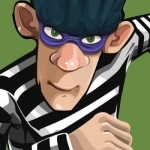
Cops & Robbers
Games and Entertainment
App
“It would be criminal to pass up the chance to post bail for this arresting blend of platforming...
